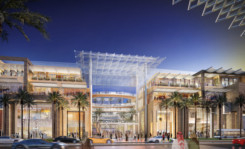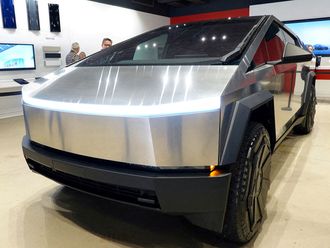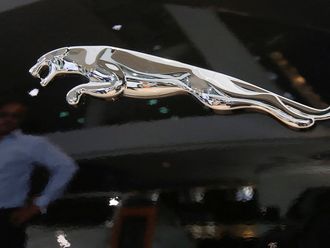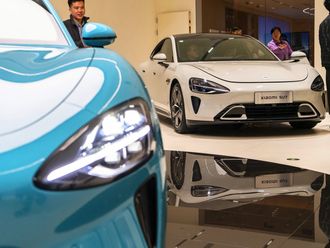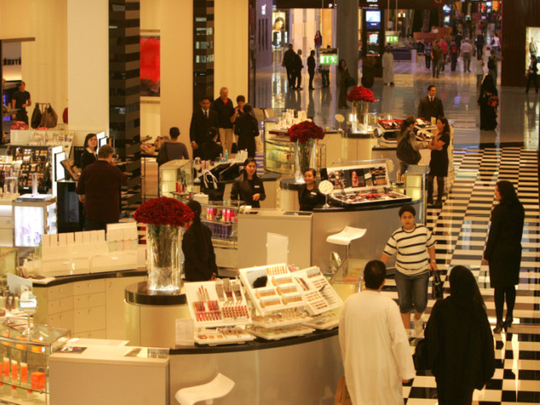
Dubai: Size matters. This was the fundamental dynamic that the region’s multi-billion dollar mall and retail sector built on over the better part of the last 20 years.
Malls had to be sprawling, anchor stores could not be anything but expansive and anybody who thought small was relegated to the sidelines of the retail revolution. Not any longer.
The shift has been subtle, but smaller mono-brand outlets are now seen as the next big thing in driving momentum through the retail sector. Mall managements, particularly in the UAE, are keen to emphasise standard store formats.
This way malls also get to have more tenants paying top dollar rather than see a situation where a handful of anchor stores take up quite a lot of space and — given their status — pay less on the rents as well.
According to data from Jones Lang LaSalle, the estimated average for a 120-square metre outlet at a leading mall in Dubai can be a substantial Dh5,000-Dh6,500 per square metre. That the retail sector has been one of the stellar performers has aided mall managements in asking — and getting — higher rents.
In this regard, the shift from a department store concept is not an isolated trend within the Gulf. According to Tony Jashanmal, executive director of the entity which bears his family name, it has already happened in the US and Europe. “Malls now like to have dedicated areas, for fashion, for luxury, mid-range products — they don’t like having a department store in that mix,” said Jashanmal, whose group set up the first department store in the region in the 1930s. “That’s why it’s getting to be quite difficult to fit in the department stores selling everything as such.
Be it Bloomingdales, Debenhams or Saks, it’s the same thing. The high margins today are basically from fashion and food and beverages. “You see 80-90 per cent of malls are full of fashion and food and beverage outlets. There are some malls which have large furniture stores because they made themselves big, but not all of them. Then there are the hypermarkets which these days sell everything. How can traditional department stores compete in this situation?”
That is also the reason why the Jashanmal Group has recast its department stores to be more of home accessories outlets. Its retail interests in fashion — being franchise for the likes of Burberry and Kate Spade — among others are now increasingly supported through standalone stores.
In Dubai, department stores typically range between 5,000 to 15,000 square metres. For a mall bringing in a big-name store meant bragging rights and having a sure-fire traffic puller. But these very reasons ensured department stores did not have to pay the premium rentals that the standard-sized and smaller outlets had to shell out for space.
Secondary anchor
“In the Middle East, department stores are found as secondary anchors behind major supermarket offers such as Carrefour or Hyper Panda which constitute the principal anchor for schemes such as Mall of the Emirates, Mirdiff City Centre and Dubai Festival City,” said Matthew Green, head of research and consultancy at CBRE. “This differs from the European model where the biggest supermarkets are found as standalone premises while large departments stores are the key mall anchors.
“The Dubai Mall bucked this trend slightly with two huge department store offerings — Galleries Lafayette and Bloomingdales — although the mall does still have a significant supermarket offer from the high-end Waitrose.”
But choosing — and retaining — an anchor store can be a fraught affair for mall managements. There has been market speculation that one of the leading local malls “could lose an existing department store and replace it with an entertainment offering”. “It would strengthen the scheme, but that is due to the strength and range of flagship and fashion stores throughout the centre which provide the range and critical mass,” said Andrew Goodwin, an independent retail analyst who tracks the Gulf markets. “Department stores are used to provide a critical mass to a centre and are generally loss-leading [funded by the increase in rents from the unit shops].”
“In difficult times developers always debate the value of a department store, but centres with strong anchors are generally more resilient to downturns and competitive schemes.”
That may be, but the shift in emphasis towards smaller, even mobile, formats is not confined to fashion and furniture offerings. Tech retail too is passing through this phase.
“Earlier the big-box tech stores used to be 50,000 square feet plus; now, on average, it is coming down to 30,000 square feet and whether it could even come down to 10,000 square feet in future I don’t know,” said Nilesh Khalko, CEO of Sharaf DG, which launched its first “big” store in 2007.
“It has to do with the number of tech brands getting reduced — six or eight years ago there were at least 10 to 12 TV brands; now there are only three to four TV names which occupy a strong top-of-mind recall.
“So, why should I have more store space when the number of brands that require proper display have come down markedly? Yes, we will still need the original big-box stores, but there are other formats which will work better in today’s times.”
Store operators and mall managements will be content with the “best for now” premise. Apart from the Yas Mall and Deerfields Town Square in Abu Dhabi, both now in the home stretch of their completion, new retail capacity within the local mall space is still three or more years down the line.
Whether big formats will come back into reckoning by then is the trend to watch for. For the moment, retailers could be better off thinking small.


